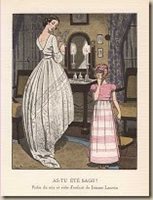 Many new fashions from Paris couturiers were introduced to the wealthy, in the fashion plates by prominent artists for Gazette du Bon Ton (Journal of Good Style). The styles of these hand-coloured pochoirs varied as much as the fashions. Many fashions were shown in settings that were considered appropriate - often with a suitable, often amusing, caption. Each artist's imaginative creativity adds considerably to the charm of the image.
Many new fashions from Paris couturiers were introduced to the wealthy, in the fashion plates by prominent artists for Gazette du Bon Ton (Journal of Good Style). The styles of these hand-coloured pochoirs varied as much as the fashions. Many fashions were shown in settings that were considered appropriate - often with a suitable, often amusing, caption. Each artist's imaginative creativity adds considerably to the charm of the image.
At left, a mother in her superb evening gown, asks her daughter if she had been good today. The little girl in a very pretty dress, has a finger in her mouth while considering her reply.
Below at left, at the door a lady accompanies a man who is looking at his watch.. saying to the young lady "You are never ready" while the young lady shows them her pretty new dress.
In the centre below, a lady in her elegant dress after the garden party looks at the ground and says "Oh my poor lawn".
At right, a lady in a beautiful dress rewards her faithful hound. One outstretched finger makes him wait, while the other hand holds silver tongs with the rewarding cube of sugar!
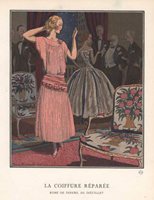
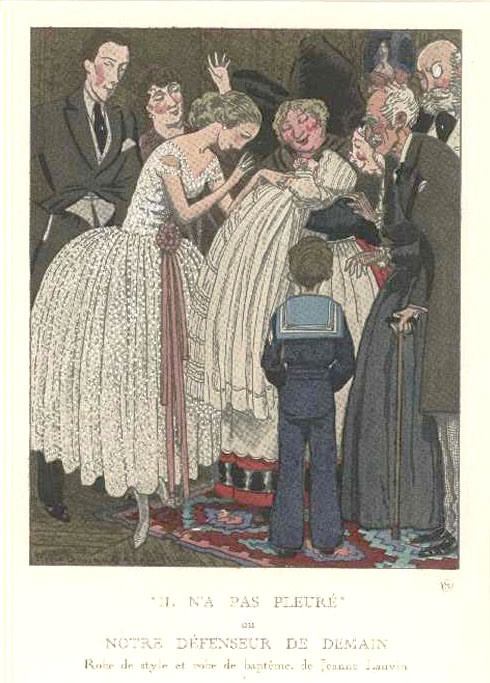
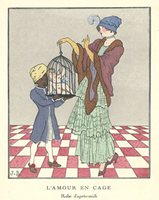
While the graphic 'fashion narrative' compositions are definitely more interesting, the fashion croquis (sketches) on a plain background, are a complete contrast in their elegant simplicity - and frequently showed fashions that are very modern in fabric and style. Many would not be out of place today.
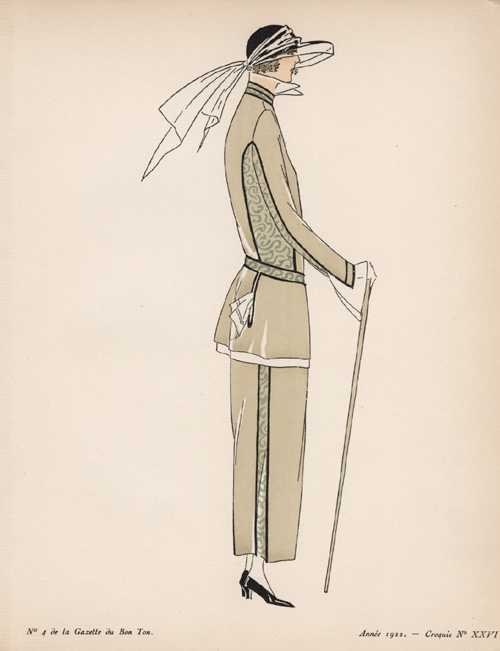
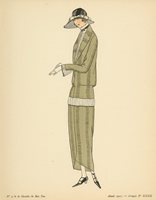
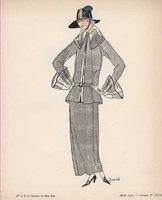 Gazette du Bon Ton
Gazette du Bon Ton was popular because of these charming pochoir fashion studies. Not only did they represent the latest styles designed by the foremost French designers of the time, they also indicated where the new fashions should be worn. The 'pochoir' (stencils) were skilfully rendered, and are some of the finest ever done of this labour intensive method of printing. Several stencils were carved from zinc plates, and the different tone built up by successive applications of water colour and gouache, to ensure the colours did not run together during printing. They can be viewed here on our Antique Print Club website at
Fashion.. 1920's hand-coloured pochoirs or, see them at our Antique Print Clubhouse by prior arrangement. We're an hour south of Brisbane at Neranwood, above Springbrook Road.